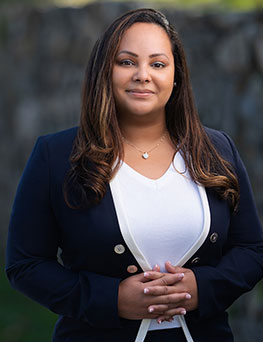Divorce is a challenging journey, one that often leads couples through tumultuous waters of emotion and uncertainty. As divorce mediators at The Mediation Source, we’ve witnessed firsthand the transformative power of a joint session in guiding couples toward amicable resolutions. In this blog post, we delve into the significance of joint sessions in the mediation process and how they can pave the way for constructive dialogue, mutual understanding, and ultimately, a smoother transition to the next chapter of life.
Joint sessions serve as the cornerstone of our mediation approach, providing a structured yet flexible environment where both parties can openly communicate their needs, concerns, and aspirations. Unlike traditional, adversarial proceedings, joint sessions foster collaboration rather than confrontation — allowing couples to maintain autonomy and control over the decisions that shape their futures.



What is a Joint Session?
A joint session refers to a meeting where both parties — along with their mediator — come together to discuss and negotiate various aspects of their divorce settlement. Unlike traditional litigation, where each spouse is represented by their respective attorneys and communication often occurs through formal channels, joint sessions offer a platform for direct, face-to-face dialogue in a neutral and controlled environment.
Purpose and Objectives of a Joint Session
The primary purpose of joint sessions is to promote constructive communication and collaboration between divorcing spouses, with the ultimate goal of reaching mutually acceptable agreements on key issues such as division of assets, child custody, visitation schedules, and financial support. By bringing both parties together in the same room, joint sessions encourage transparency, empathy, and active listening, laying the foundation for productive negotiations and sustainable outcomes.
Structure
Joint sessions typically follow a structured yet flexible format, guided by the mediator and the specific needs of the couple. Prior to the session, the mediator may work with each party individually to identify their priorities, concerns, and goals, helping to set the agenda for the meeting. During the session, the mediator facilitates the discussion, ensuring that both parties have an opportunity to express their perspectives, ask questions, and explore potential solutions.
Key Components of a Joint Session
In a joint session, several key components ensure productive and respectful dialogue. Firstly, establishing ground rules is essential. These guidelines promote respectful communication by encouraging participants to take turns speaking, avoid interruptions, and reframe their statements in a non-confrontational manner. Setting an agenda is another critical step, where the topics for discussion are identified and prioritized based on their importance and complexity.
Information sharing is crucial to the process, involving the exchange of relevant documents, financial information, and other necessary details to facilitate informed decision-making. Brainstorming solutions encourages creative thinking and problem-solving, allowing participants to explore various options and alternatives to address each party’s interests and concerns.
Finally, negotiation and compromise play a pivotal role. Engaging in constructive dialogue helps the parties reach a consensus on disputed issues, with the mediator assisting in bridging differences and finding common ground.
Strategies and Tips for Maximizing Joint Sessions
To maximize the effectiveness of joint sessions during mediation, it’s important to adopt a series of thoughtful strategies and tips.
Thorough preparation is crucial. Before the joint session, take some time to reflect on your priorities, concerns, and goals for the mediation process. Gather any relevant documents and information that can support your positions, and be ready to share them during the session.
Effective communication is also key. Practice active listening and avoid interrupting or speaking over your spouse. It’s important to allow each other the space to express thoughts and feelings without judgment. Using “I” statements to convey your perspective can help avoid placing blame or making accusatory remarks.
Maintaining a calm and respectful demeanor is essential, especially since emotions can run high during divorce mediation. Even when discussing difficult topics, try to remain composed and respectful. If needed, take breaks to manage stress or emotions and utilize coping strategies such as deep breathing or mindfulness exercises.
Keeping an open mind is another important aspect. Approach the joint session with a willingness to explore different perspectives and consider alternative solutions. Being open to compromise and creative problem-solving is key to reaching mutually beneficial agreements.
Trust the process. Divorce mediation is a journey, and joint sessions are just one step along the way. Trust in the experience of your mediator and the collaborative nature of the process. Remember that the goal is not to “win” or “lose,” but rather to find solutions that meet the needs of both parties and pave the way for a smoother transition to the next chapter of your lives.
By implementing these effective strategies for communication and collaboration, couples can navigate their joint sessions with confidence and clarity, laying the groundwork for a brighter, more harmonious future.
The Steps of Divorce Mediation
Initial Consultation
The journey begins with an initial consultation, where couples meet with a mediator to discuss their unique situation, goals, and concerns. During this meeting, the mediator provides an overview of the mediation process, answers any questions, and assesses whether mediation is the right fit for the couple.
Setting the Agenda
With information in hand, the mediator works with the couple to identify the issues that need to be addressed during mediation. Common agenda items include asset division, child custody, visitation schedules, and financial support.
Gathering Information
Once the decision to proceed with mediation is made, the next step involves gathering relevant information and documentation. This may include financial records, asset inventories, and any other information necessary for informed decision-making during the mediation process.
Joint Sessions
Joint sessions form the core of the mediation process, where couples, along with their mediator, come together to discuss and negotiate the terms of their divorce settlement. These sessions provide a platform for open communication, collaboration, and constructive dialogue, guided by the expertise of the mediator.
Generating Options
During joint sessions, the mediator facilitates brainstorming and exploration of potential solutions to the issues at hand. Couples are encouraged to think creatively and consider a range of alternatives to find mutually acceptable agreements that meet their unique needs and priorities.
Negotiation and Agreement
Once options have been generated, the focus shifts to negotiation, where couples work together to reach consensus on the terms of their divorce settlement. The mediator assists in bridging differences, facilitating compromise, and drafting a comprehensive agreement that reflects the decisions made by the couple.
Finalizing the Agreement
The final step of the mediation process involves reviewing and finalizing the agreement reached during mediation. Once both parties are satisfied with the terms, the agreement is formalized and submitted to the court for approval, thereby concluding the mediation process.
Benefits of Mediation Over Litigation or Arbitration
Mediation offers numerous benefits over litigation or arbitration in divorce cases. One significant advantage is the preservation of relationships. Mediation fosters cooperation and respect between divorcing spouses, which is particularly important when children are involved, helping to maintain important familial bonds.
Cost-effectiveness is another key benefit. Mediation is often more affordable than traditional litigation, as it typically requires fewer resources and can be completed more quickly. This efficiency extends to the process itself, allowing couples to resolve their differences in a timely manner and move forward with their lives without enduring lengthy court battles.
A notable aspect of mediation is the empowerment it provides to couples. Unlike litigation, where decisions are made by a judge, mediation allows couples to retain control over the decision-making process. This empowerment enables them to design solutions that align with their unique needs and priorities.
Confidentiality is also a crucial benefit of mediation. The proceedings are private, offering a safe space for couples to discuss sensitive issues without fear of public scrutiny. This confidentiality promotes a more open and honest dialogue.
Flexibility is another advantage of mediation. Couples can explore creative solutions tailored to their specific circumstances, allowing for greater customization in resolving disputes. This flexibility is often absent in the more rigid structure of litigation.
Mediation can facilitate emotional healing. By promoting open communication and constructive dialogue, it helps couples navigate the challenges of divorce with grace and resilience, fostering emotional closure and healing.
Related Videos
What is divorce mediation?
Why should I choose divorce mediation?
Here to Help Make Divorce Less Difficult
The joint session represents the heart of the divorce mediation process, providing couples with a structured yet flexible platform to navigate the complexities of separation with grace and understanding. Through open communication, collaborative problem-solving, and the guidance of a skilled mediator, couples can forge a path toward mutually acceptable resolutions that honor their individual needs and priorities.
At The Mediation Source, we understand the challenges and emotions that accompany divorce, and we are here to support you every step of the way. If you’re considering divorce mediation, we encourage you to take the next step and reach out to our office. Our team of experienced mediators are dedicated to helping couples find peaceful and sustainable solutions to their disputes, empowering them to move forward with confidence and clarity.
Don’t wait any longer to take control of your future. Contact us today to schedule your initial consultation and embark on the journey toward a brighter tomorrow. Your path to resolution starts here.






